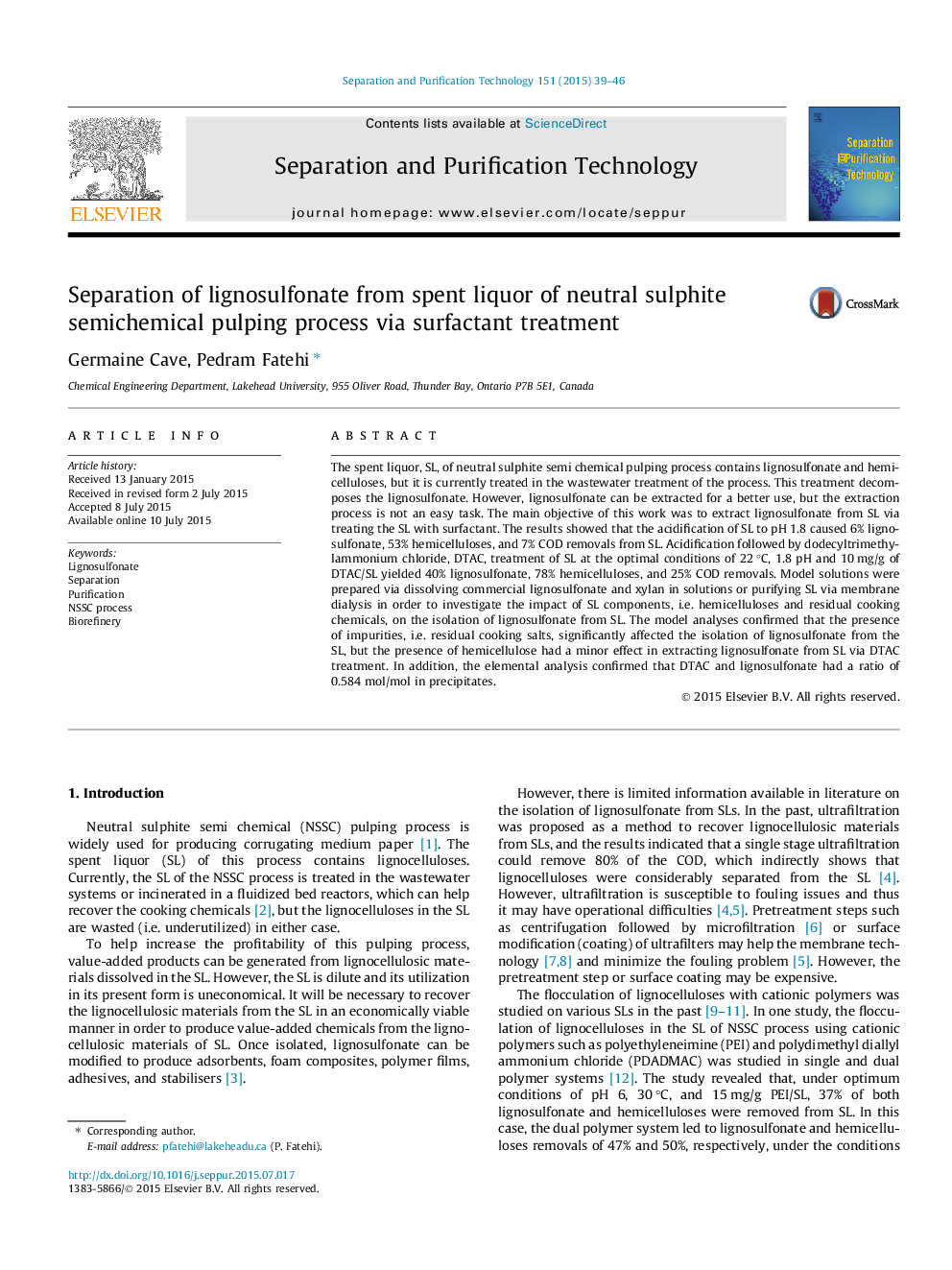| کد مقاله | کد نشریه | سال انتشار | مقاله انگلیسی | نسخه تمام متن |
|---|---|---|---|---|
| 640406 | 1456968 | 2015 | 8 صفحه PDF | دانلود رایگان |
• Lignosulfonate dissolved in the spent liquor of NSSC process is currently wasted.
• Lignosulfonate is extracted via treating spent liquor with acid and surfactant.
• The impurities of spent liquor significantly affect the isolation of lignosulfonate.
• Hemicellulose has insignificant impact on the removal of lignosulfonate.
• Surfactant interacts with lignosulfonate with the mole ratio of 0.58.
The spent liquor, SL, of neutral sulphite semi chemical pulping process contains lignosulfonate and hemicelluloses, but it is currently treated in the wastewater treatment of the process. This treatment decomposes the lignosulfonate. However, lignosulfonate can be extracted for a better use, but the extraction process is not an easy task. The main objective of this work was to extract lignosulfonate from SL via treating the SL with surfactant. The results showed that the acidification of SL to pH 1.8 caused 6% lignosulfonate, 53% hemicelluloses, and 7% COD removals from SL. Acidification followed by dodecyltrimethylammonium chloride, DTAC, treatment of SL at the optimal conditions of 22 °C, 1.8 pH and 10 mg/g of DTAC/SL yielded 40% lignosulfonate, 78% hemicelluloses, and 25% COD removals. Model solutions were prepared via dissolving commercial lignosulfonate and xylan in solutions or purifying SL via membrane dialysis in order to investigate the impact of SL components, i.e. hemicelluloses and residual cooking chemicals, on the isolation of lignosulfonate from SL. The model analyses confirmed that the presence of impurities, i.e. residual cooking salts, significantly affected the isolation of lignosulfonate from the SL, but the presence of hemicellulose had a minor effect in extracting lignosulfonate from SL via DTAC treatment. In addition, the elemental analysis confirmed that DTAC and lignosulfonate had a ratio of 0.584 mol/mol in precipitates.
Journal: Separation and Purification Technology - Volume 151, 4 September 2015, Pages 39–46
